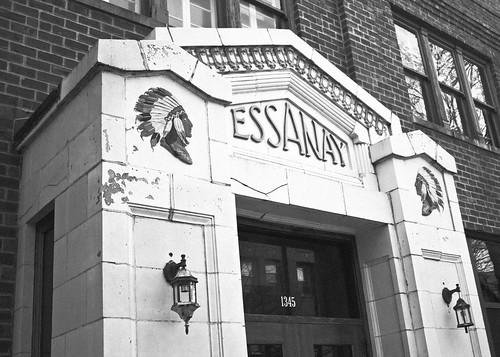A brief trip back to Uptown, to look at some more film history. This building is on west Argyle, not far away from the Lawrence-Broadway entertainment nexus. Now the home of St. Augustine College, it was the home of the Essanay Film Manufacturing Company, one of the leading studios of the silent film era.
Founded by Gilbert M. Anderson and George Spoor, Essanay was originally located over on Wells, relocating to Uptown in 1908 after their first film "An Awful Skate, or The Hobo on Rollers" was a success. Starring Ben Turpin (who was the studio's janitor at the time), the film was made for only a few hundred dollars, and grossed thousands on it's release.
Aside from Turpin, Essanay rostered quite a few stars of the silent era, including George Periolat, Tom Mix, Gloria Swanson, and Bebe Daniels, but the studio's mainstays were G.M. Anderson's "Broncho Billy" Westerns, and possibly the most famous name associated with Essanay, Charles Spencer Chaplin.
Essanay had successfully lured Chaplin away from Keystone Studios by offering him a higher salary and his own production unit. Chaplin made 14 films for the company-including "The Tramp", considered to be the first film to truly showcase Chaplin's ability-before leaving for an even bigger contract with Mutual. The loss of Chaplin's popular films heralded Essanay's fall-future films didn't gross nearly as well, and a rift developed between Anderson and Spoor. The studio joined Vitagraph, Lubin, and Selig studios in the VLSE conglomerate, but only Vitagraph was to survive before being absorbed by Warner Brothers in the mid 20's.
I've looked around the studio building once or twice-for the most part it doesn't really look like what you'd think a movie studio would look like. Neither does the area, which is in the middle of what is now a mostly residential neighborhood, hemmed in by two flats and small houses. But the name is still over the door, recalling the early days of the film industry and Chicago's part in it.
Wednesday, October 13, 2010
S and A
Subscribe to:
Post Comments (Atom)

No comments:
Post a Comment